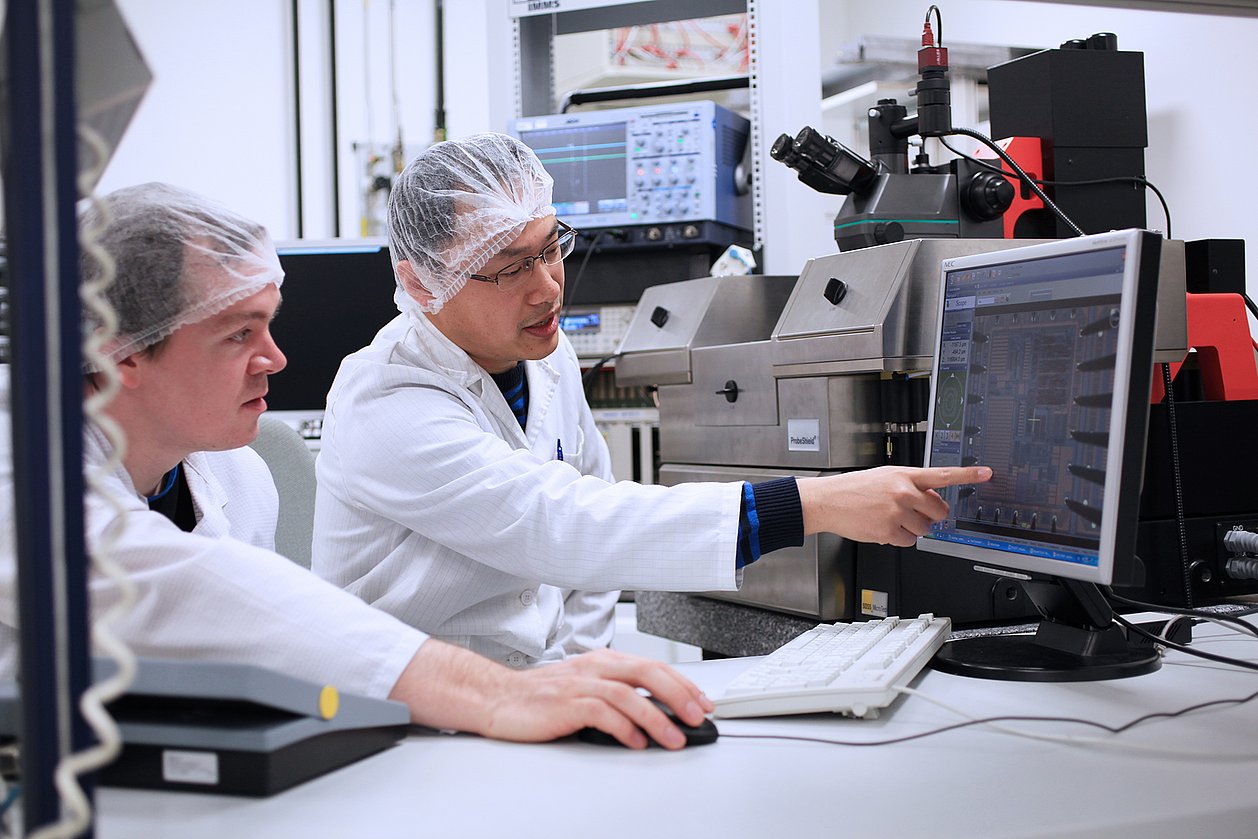Project Ovutinin
For an innovative rapid test for fertility diagnostics, IMMS is developing an image sensor for time-resolved fluorescence measurement.
In Germany almost every tenth couple between 25 and 59 years suffers from an unfulfilled wish to have children1. Ovulation tests, among other things, are one way to help. These are used in a similar way to pregnancy tests and usually detect the ovulation-inducing luteinising hormone (LH) in urine, which significantly rises in concentration one day before ovulation. Some tests also detect oestrogen, which increases three or four days before ovulation. The hormones are made visible with antibodies on the test strip.
Current digital rapid tests with interchangeable test strips use these two hormones to detect ovulation about four days before. The test is only reliable if it is used with morning urine.
In the Ovutinin project, a new rapid test for fertility diagnostics is being developed which can be used at home with test strips and with a reader to identify the fertile phase up to six days before ovulation, regardless of the time of day the test is taken.
Test strip by Senova will combine immunological and chemical detection for the first time
The lateral flow test is being developed by our partner Senova. It will not only provide a simultaneous determination of oestrogen and LH values, as is currently customary, but also progesterone and creatinine values in urine using immunological and chemical detection methods. Progesterone is used to prove that ovulation has actually occurred. The creatinine content enables a normalisation to the amount of urine and thus measurements to be taken independently of the time of day.
Current readers limit the number of test lines
Current readers for home application are mostly based on reflectometric measurements. Therefore, they reach their limits if more than two hormones are present on a stripe test. The reason for this is that the demands on positioning accuracy increase with the number of test lines. The lines on the test strip must first be manufactured accurately and the strips must then be precisely aligned in the reader.
Image sensor chip of IMMS for time-resolved fluorescence measurement for more precise readings
IMMS is developing the prototype for a compact and cost-effective digital reader that will evaluate the test strips by transillumination. The core of the device will be a CMOS imager chip for time-resolved fluorescence measurement. This sensor IC will be designed for the new test strip in terms of its geometrical and optical properties. Inaccuracies in positioning can then be easily compensated by software.
In the test strip, the fluorophores which are available after a reaction with biomarkers are optically excited and emit photons which are detected by the chip. In time-resolved fluorescence measurement, this emission is measured after the excitation light has disappeared. As a result, no further optical filters are necessary. Thus, even very weak fluorescence light can be quantitatively detected and higher sensitivities can be achieved.
Acronym / Name:
Ovutinin /Duration:2020 – 2023
Application:
Life SciencesResearch field:Integrated sensor systems
Contact
Contact
Eric Schäfer, M. Sc.
Head of Microelectronics / Branch Office Erfurt
eric.schaefer(at)imms.de+49 (0) 361 663 25 35
Eric Schäfer and his team research Integrated sensor systems, especially CMOS-based biosensors, ULP sensor systems and AI-based design and test automation. The results are being incorporated into research on the lead applications Sensor systems for in-vitro diagnostics and RFID sensor technology. It will assist you with services for the development of Integrated circuits and with IC design methods.
Funding
The Ovutinin project was funded by the Federal Ministry of Economics and Energy (BMWi) / Federal Ministry of Economic Affairs and Climate Action (BMWK) on the basis of a resolution of the German Bundestag under the number ZF4085713AJ9.







